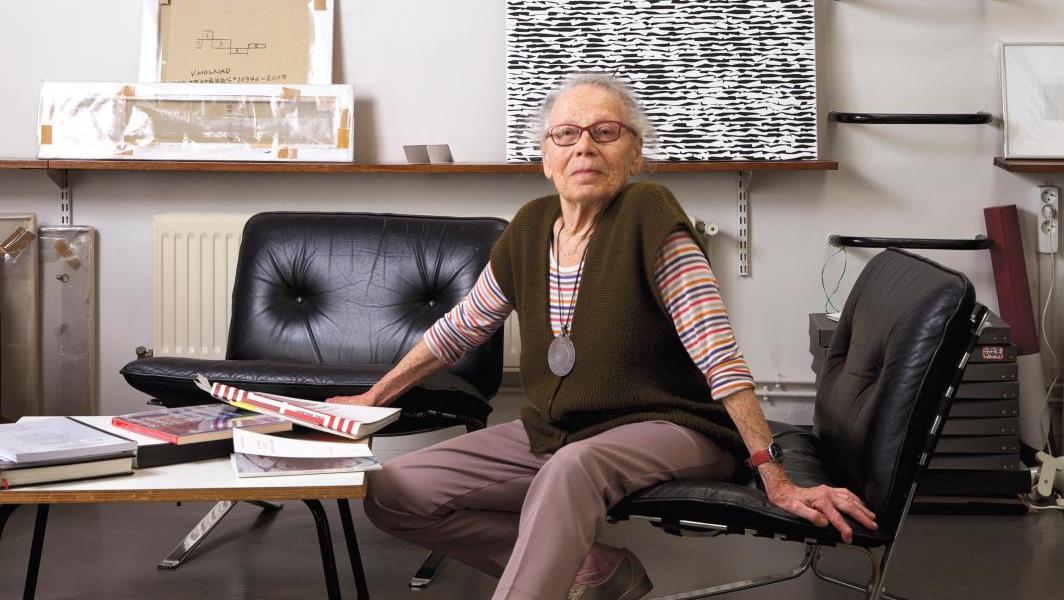by Stéphanie Pioda
Since 1964, she has lived and worked in a house-studio she designed with her husband François, hidden at the back of a garden behind a building in Paris's 14th arrondissement, not far from Denfert-Rochereau. In Vera Molnar's home, there is no separation between art and life: "Art is an obsession; that's all I think about," she says. The living area is on the first floor, and the studio on the second. Furthermore, she started working with François Molnar, whom she met during her studies and with whom she married in 1948, one year after their arrival in Paris.. He preferred to devote himself to research by joining the CNRS (French National Centre for Scientific Research), after the failure of the GRAV (Groupe de recherche d'art visuel initially called CRAV, Centre de recherche d'art visuel), created in 1960 and dissolved in 1968. The disagreements within the group, founded in particular by Julio Le Parc and François Morellet, came from divergent points of view, François Molnar favoring a scientific approach and refusing to run "after art critics and galleries." Born in Budapest on January 5,1924, when she was only sixteen Vera Molnar decided to become an artist and live in Paris. "I first thought that Paris, France was the motherland of art, and I read somewhere, or someone told me, about the beautiful idea of the French Republic – not France: the Republic, I wanted to live in the French Republic," she said in an interview.
Read more....
Read more....





